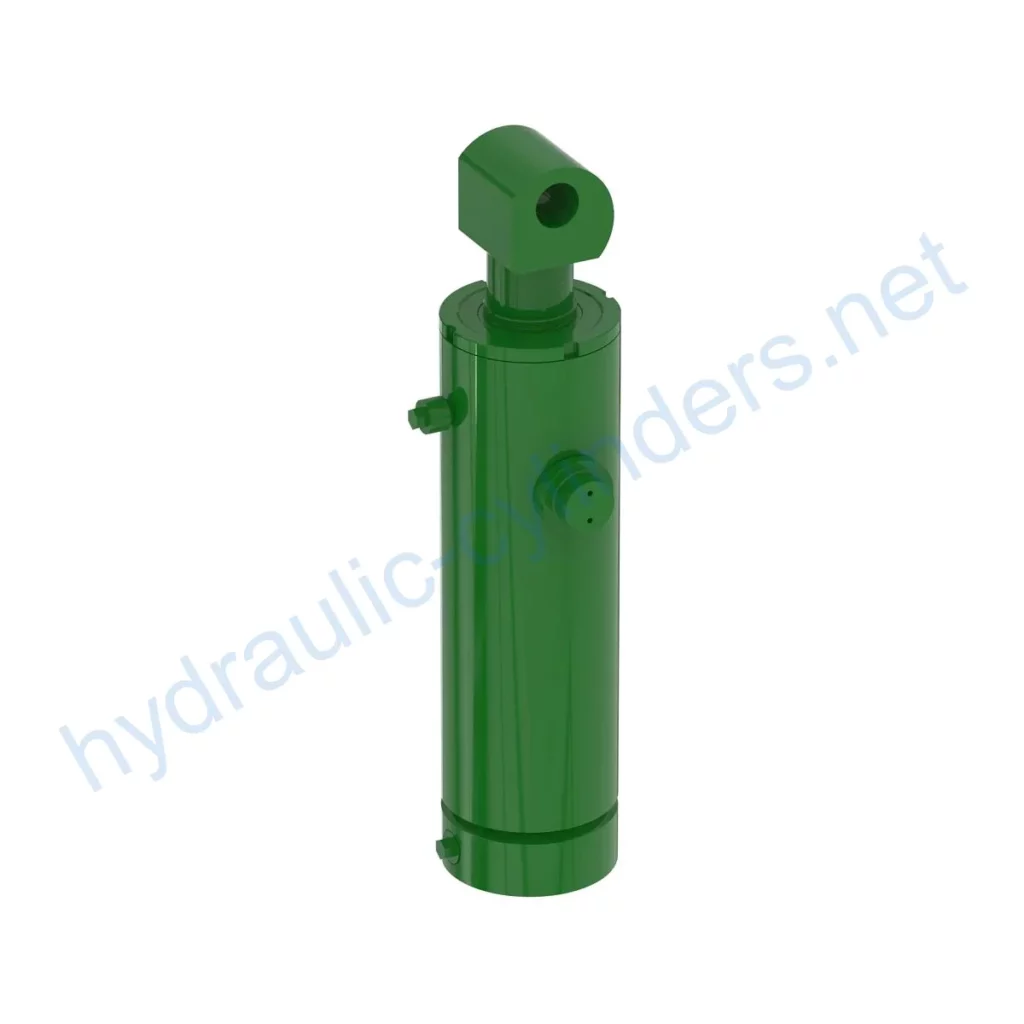Replacement Of AHC22958 Hydraulic Cylinder
The AHC22958 hydraulic cylinder is a crucial component in various heavy machinery, including the 1775NT model. It plays a vital role in enabling smooth and efficient operation by providing the necessary force for different applications.
Specifications
- Weight: 112.063 lb
- Height: 8.4 in
- Length: 25.2 in
Features
- Improved Equipment Performance: Replacing damaged or worn-out hydraulic cylinders can restore the normal operational capability of the equipment, ensuring optimal performance in various applications.
- Enhanced Safety: Regularly replacing hydraulic cylinders reduces the safety risks associated with cylinder failures, ensuring the safety of both operators and equipment.
- Overload Protection: New cylinder designs often incorporate better overload protection mechanisms, increasing overall safety.
- Quick Installation: Modern hydraulic cylinders are designed with easy installation and replacement in mind, minimizing downtime.
- Standardized Components: Many hydraulic cylinders are standardized products, making it easier to obtain replacement parts in the market.
We specialize in manufacturing replacement hydraulic cylinders that perfectly match these specifications. Our products are designed to seamlessly replace the AHC22958 hydraulic cylinder, ensuring optimum performance and reliability.
Applications
The AHC22958 hydraulic cylinder finds versatile applications in various industries. Here are three examples:
- Excavators: The hydraulic cylinder on the excavator’s arm or bucket may get damaged due to extended use or overload, requiring replacement for normal operation restoration.
- Cranes: The lifting arm hydraulic cylinder of a crane is prone to wear during frequent lifting and lowering operations. Regular replacement is necessary to ensure safety.
- Tractors: The front loader hydraulic cylinder on a tractor may experience leaks or performance deterioration due to continuous lifting and tilting operations, necessitating replacement.
These are just a few applications, but the AHC22958 hydraulic cylinder can be used in various other scenarios, such as harvesters, automated production lines, mining equipment, bulldozers, and more.
Maintenance and Care
To ensure the longevity and optimal performance of the hydraulic cylinder, it is important to perform regular maintenance tasks:
- Regular Inspection: Periodically check the cylinder for any signs of damage, leaks, or wear.
- Proper Lubrication: Use the recommended hydraulic oil and apply it in appropriate amounts to ensure smooth operation.
- Seal Replacement: Over time, seals may wear out, leading to leaks. Replace worn-out seals promptly to maintain efficiency.
During installation, it is crucial to provide proper alignment guidance and recommend using suitable installation brackets to secure the cylinder. We offer inspection, repair, and replacement services, ensuring the longevity of your hydraulic cylinder.
Safety Considerations and Environmental Factors
When working with hydraulic cylinders, it is imperative to prioritize safety measures. This includes following proper installation procedures, using appropriate Personal Protective Equipment (PPE), and ensuring a clean and hazard-free work environment.
Fault Diagnosis and Common Issues
Hydraulic cylinder faults can hinder performance and productivity. Here are some common issues to be aware of:
- Leakage: Inspect the cylinder for any signs of oil leakage, which can indicate damaged seals or other internal issues.
- Poor Operation: If the cylinder’s movement becomes jerky or uneven, it may point to internal damage or misalignment.
- Lack of Power: Insufficient force exerted by the cylinder can result from worn-out components or inadequate hydraulic pressure.
When encountering such faults, proper troubleshooting and problem-solving techniques are essential. We provide helpful tips and solutions to aid readers in diagnosing and resolving these issues effectively. Additionally, we offer preventive measures to minimize potential problems.
Design Considerations and Selection Criteria
When selecting hydraulic cylinders, certain design considerations and criteria must be taken into account:
- Load-Bearing Capacity: The cylinder must be capable of withstanding the maximum loads it will encounter.
- Sealing and Durability: High-quality seals and durable materials are essential to ensure long-lasting performance.
- Safety: Choose cylinders that meet safety standards and incorporate safety features to prevent accidents.
- Maintainability: Easy maintenance and repairability are important factors for minimizing downtime and increasing productivity.
Sealing and Lubrication
Proper sealing and lubrication play vital roles in the performance and longevity of hydraulic cylinders:
- Various sealing elements, such as piston seals and rod seals, should be made of wear-resistant materials like polyurethane or nitrile rubber.
- Cylinder bodies and threaded ends should undergo precision treatments to enhance wear resistance.
- Regular lubrication with the appropriate amount of hydraulic oil ensures smooth operation and minimizes wear and tear.
Regular Inspection and Preventive Maintenance
Regular inspection and preventive maintenance are essential for extending the lifespan of hydraulic cylinders. Here are some recommended practices:
- Thoroughly inspect the cylinder for any signs of damage, leaks, or wear at regular intervals.
- Ensure proper installation, lubrication, and adjustment to optimize cylinder performance.
- Provide alignment guidance during installation, and recommend using suitable mounting brackets to secure the cylinder.
- Follow recommended inspection, repair, and replacement procedures to maintain the cylinder’s optimal condition.
- Offer replacement parts and rebuilding services to enhance the longevity of hydraulic cylinders.
Product Installation Guide
Proper installation ensures the functionality and safety of the hydraulic cylinder. Follow these guidelines:
- Prepare the installation area, ensuring it is clean and free from debris.
- Align the cylinder’s mounting holes with the corresponding holes on the equipment.
- Securely fasten the cylinder using suitable mounting brackets and hardware.
- Check and adjust the cylinder’s position to ensure proper alignment and functionality.
- Consult the equipment’s manual for specific installation instructions and torque requirements.
About Our Company
We are a leading manufacturer and wholesale distributor of replacement hydraulic cylinders. With a comprehensive range of products, we have established ourselves as a trusted name in the domestic and international markets.
Our company stands out due to:
- Expertise: Our team of professionals possesses extensive knowledge and experience in the field of hydraulic cylinder production.
- International Certifications

